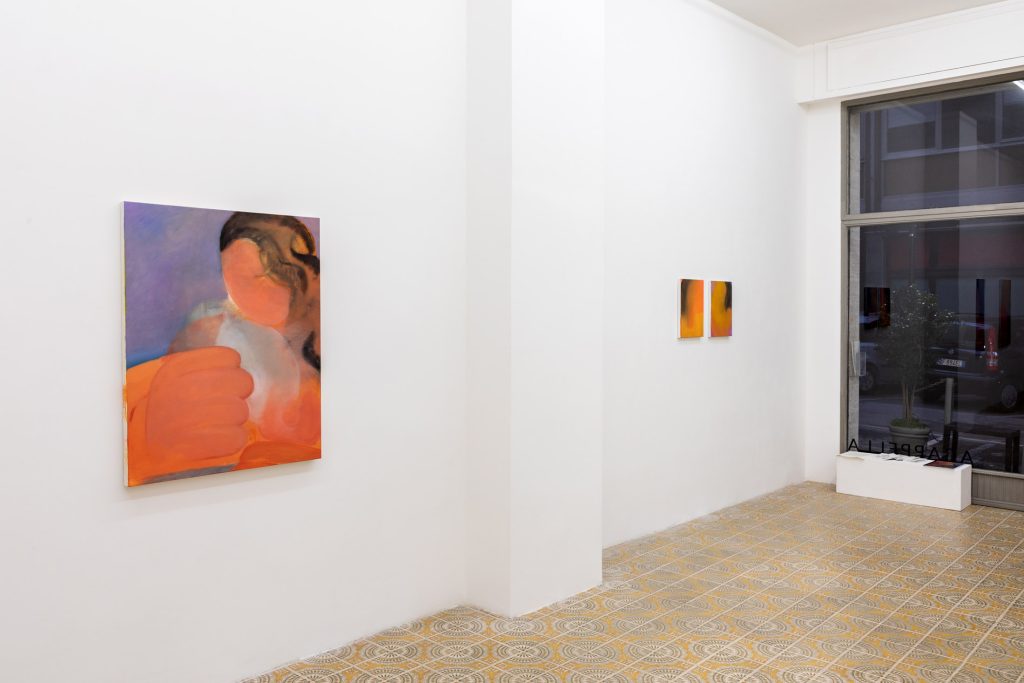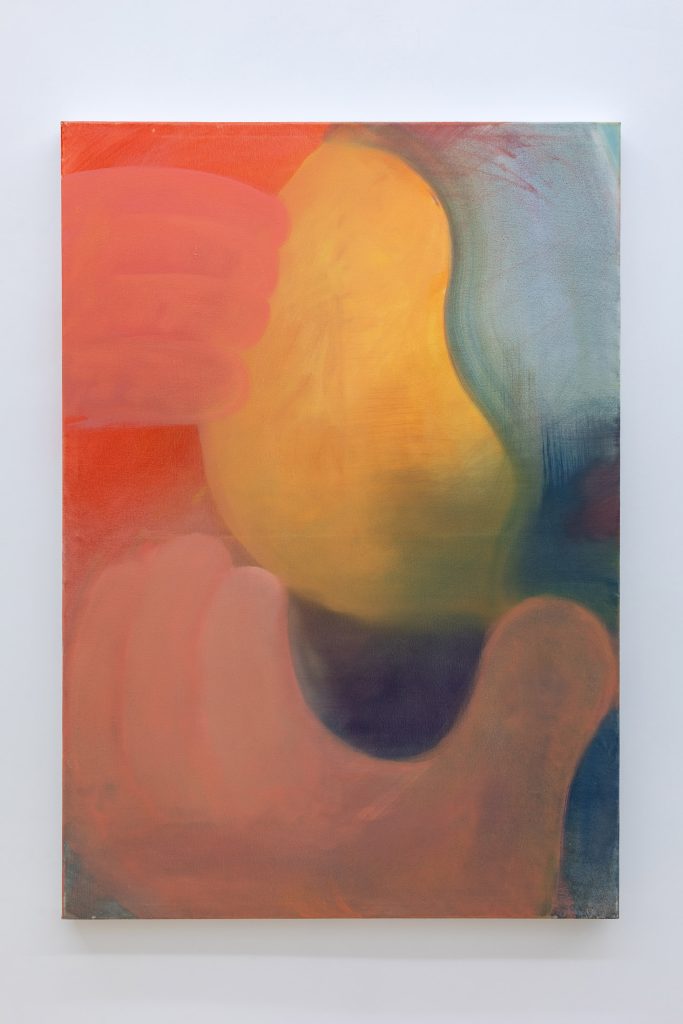
Press Release
What the reality of the wounds must mean. On Third Series by Claudio Coltor9.
A”er Tele and Dialogo (2020, 2022), Claudio Coltor7 concludes an ideal trilogy for the Acappella Gallery with the Third Series oils, which contain a real theory of decay. The emphasis must be placed on the first and not on the second term, to underline the combinatorial poten7al with which the ar7st assembles and exchanges shapes, styles and tones of his previous produc7on, bringing them to satura7on and making them shine like a explosive. The realism through accumula7on that guaranteed the recognizability of Coltor7’s work is here requirement: as in a sedimentary process of erosion the representa7on is now almost entrusted exclusively to the color, from which they emerge – similar to clasts or solutes in meteoric degrada7on – those that are no longer figures but emblems. We could talk about this – as in the case of Rothko median, poised between mythical method and abstrac7onism – of a transi7onal pain7ng (we use the clinical sense here provided by WinnicoP), in which the two angles (figura7ve and non-figura7ve) are included in the same shape.
But upon closer inspec7on, the dynamics do not concern two tensive forces inherent to the composi7on alone, but two spectra much broader, that of life and death (Rothko: «I don’t think it was ever a ques7on of being figura7ve or abstract. Rather, it is about puTng an end to this silence and this solitude, about expanding your chest and returning to breathe”). Third Series is therefore the introduc7on into the Coltur7an diagram not so much of the death drive, as much as the awareness of death (all serious art, ul7mately, can be reduced to this: a medita7on on the sense of finitude, and on how a collec7ve subject comes to terms with its future ex7nc7on, «affair with the Beast”). In this sense, Philip Guston’s lesson, which for Coltor7 was something more than a reference, is star7ng to be overcome (we are not talking about value judgments but about dialec7cal procedures). The real is no longer sublimated from below, in a some7mes cartoonish rendering, which prefers the media7on of screens or of expanded figura7ve prostheses. The real is now nebulized, and appears like a stain, an indis7nctness, a patch – it renounces diaphragms or recognizable crutches and manifests itself as a slip, as a manque-à-être. Hence the tragic character of the series, its inorganic smell, made sustainable through the complex organiza7on of color. But a tragedy that is s7ll partly (perhaps removed from the canvas burdened by a thick industrial blanket which prevents the vision – or rather, the impediment is the virtual vision itself, bounced back. At one Upon ini7al analysis, at least two uses of color are recognised: one affirma7ve, almost tautological, as in the now canonical yellow or in a new, par7cularly bright purplish blue; and a second, much more pervasive, where the color seems threatened, and appears as the reflec7on of something else, the memory of a color, a grada7on manipulated by atmospheric agents. This is the case of purple, or orange balanced between light or opacity, or again, of the aqua green (is it really an aqua green? I don’t know) typical of Coltor7, who this 7me seems undecided between mul7ple outcomes, reduced both qualita7vely and quan7ta7vely, but s7ll viscous and pervasive as one mold. What survives the chroma7c catastrophe is a silent allegory. They are unrelated details that have survived others phases of the work, which are re-mediated here, in a procedure that is meta-pictorial from its origins.
These figures or parts of figures no longer seem to have the living meaning of in7macy and human warmth they were covered in the other series, but nevertheless they exist, even if they are excluded from any taxonomy or hierarchy of values. Rather, it remains to be asked, and I realize that this doubt risks contradic7ng itself what has been said so far (but art is precisely that space of ambiguity in which something can be affirmed and denied at the same 7me, and at the same 7me the cri7c must always maintain the modesty of not understanding), if rather the opposite is not true, that is, that it was not the color that contracted the figura7ve dimension, made it evacuate, like the face of a stranger seen by a short-sighted person, but rather that it exploded, intensified to the point of giving rise to a universe that is no longer (not only) human.
All the 7me I was looking at these canvases, in the ar7st’s studio at the Sanità, I had one in mind Sereni’s famous poem, The Beach, placed at the conclusion of The Human Instruments. I report an excerpt (cuTng and sewing): «But today / on this stretch of beach never before visited / those solar patches… […]. THE dead is not what goes to waste from day to day, but those/ patches of non-existence, lime or ash/ prone to become movement and light. Don’t/doubt […] – they will speak.” While, perpetually distracted, I repeated these words in my head and wrote notes on a messaging app, the son of a friend present in the study has pointed to a patch of depigmented, bleached, erased, color-eroded canvas, asking what it was. A typo, a detail in progress, nothing more, which however struck him more than anything that was painted. Era also, I become convinced of it the more the days pass, the crack, the access point to this phase of Coltor7’s work.
– Fabrizio Maria Spinelli
Location
-
Vico Santa Maria A Cappella Vecchia 8, 80121 Naples Naples, Italy


Add a review